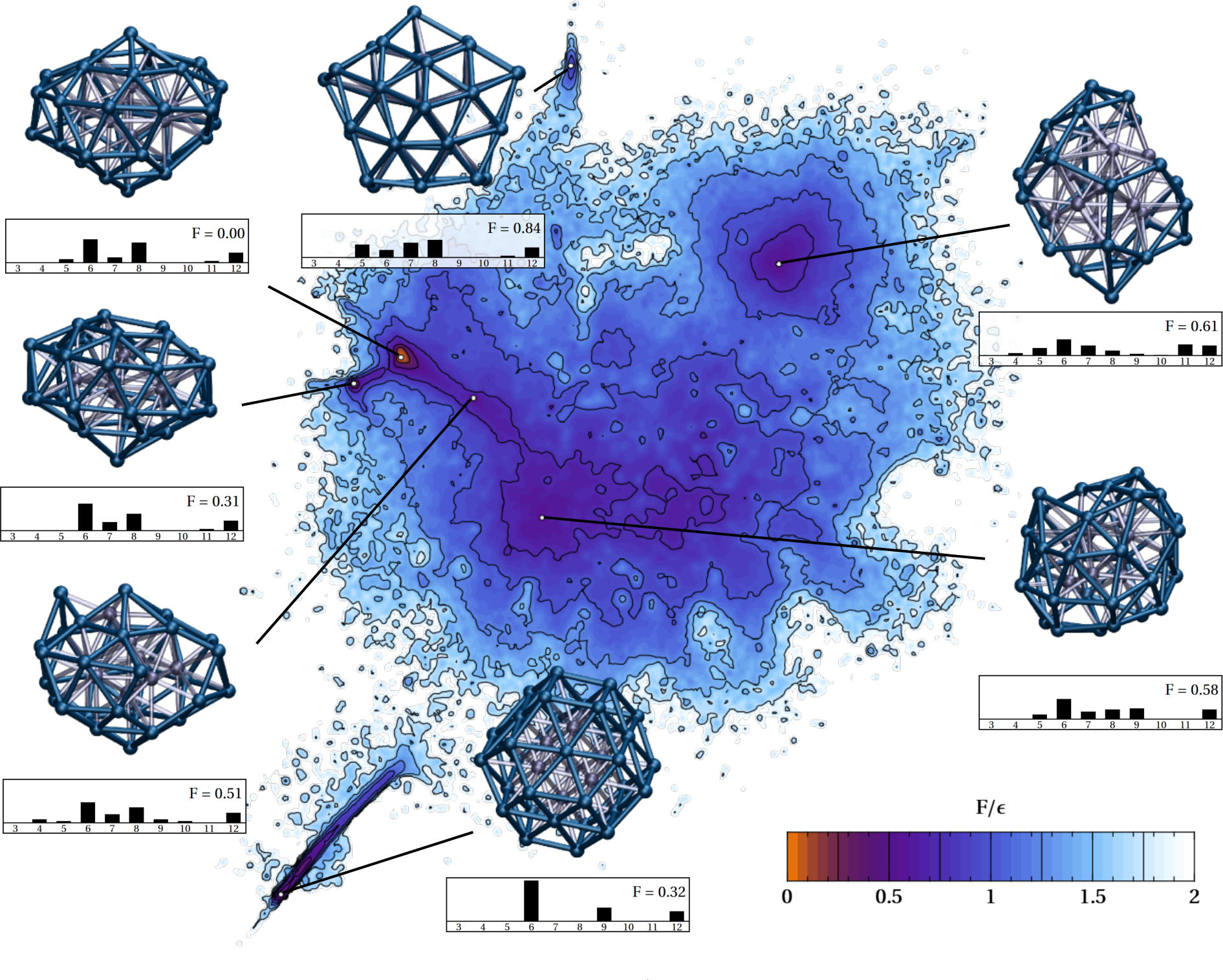This course gives an overview of simulation techniques that are useful for the computational modeling of materials and molecules at the atomistic level. The student will learn about basic and advanced methods to evaluate thermodynamic averages by molecular dynamics, including accelerated sampling for the study of rare events, and non-linear dimensionality reduction to study structurally-complex systems.

Constant-temperature sampling in atomistic simulations
- Canonical averages and importance sampling
- Monte Carlo, detailed balance and the Metropolis algorithm
- Molecular dynamics, integrators, energy conservation
- Autocorrelation functions, correlation time and statistical efficiency
Thermostatting molecular dynamics
- Breaking energy conservation and getting into the canonical ensemble
- Global and local thermostats, deterministic and stochastic thermostats
- Langevin dynamics. Stochastic differential equations and sampling efficiency
- Colored-noise generalized Langevin dynamics
Rare events. Getting dynamics from ensemble averages
- Rare events and time-scale separation
- Transition-state theory on the potential energy surface
- Collective coordinates. Free energy and TST on the free-energy surface
- Beyond TST. Bennett-Chandler method, committor analysis
Reweighed sampling and adaptive biasing
- Reweighing a trajectory to get averages in a different ensemble
- Statistics of reweighing — sampling efficiency of weighted averages
- Umbrella sampling and metadynamics — basics, examples and caveats
- Linear and non-linear dimensionality reduction
Dimensionality reduction — coarse-graining the description of structurally complex systems
- Linear projections: principal component analysis; classical multidimensional scaling
- Non-linear dissimilarity measure: ISOMAP
- Sketch map: using proximity matching to describe atomistic problems
The course consists in an introduction to the teoretical aspects of sampling in atomistic simulations, followed by a series of hands-on lectures where the different techniques are applied to a simple but challenging example – a cluster of 38 rare-gas atoms.
 All of the course materials are licensed under a Creative Commons Attribution-ShareAlike 4.0 International License.
All of the course materials are licensed under a Creative Commons Attribution-ShareAlike 4.0 International License.